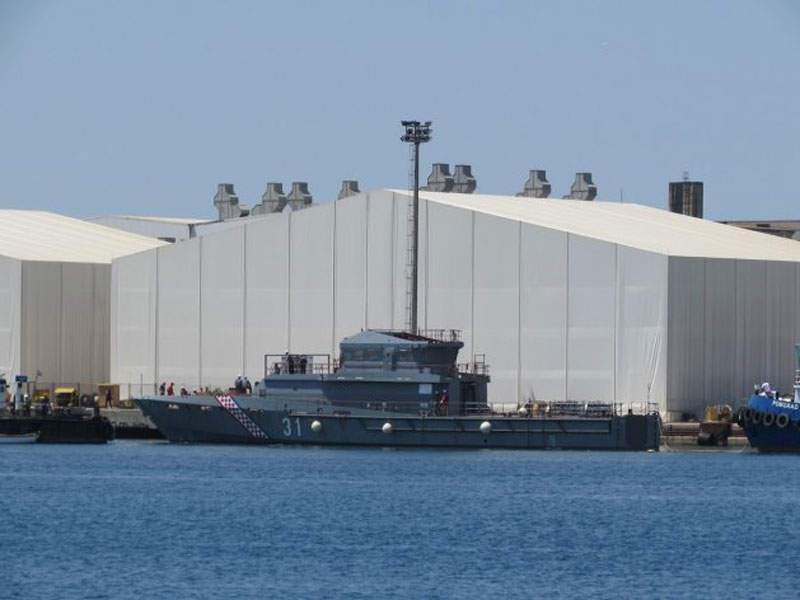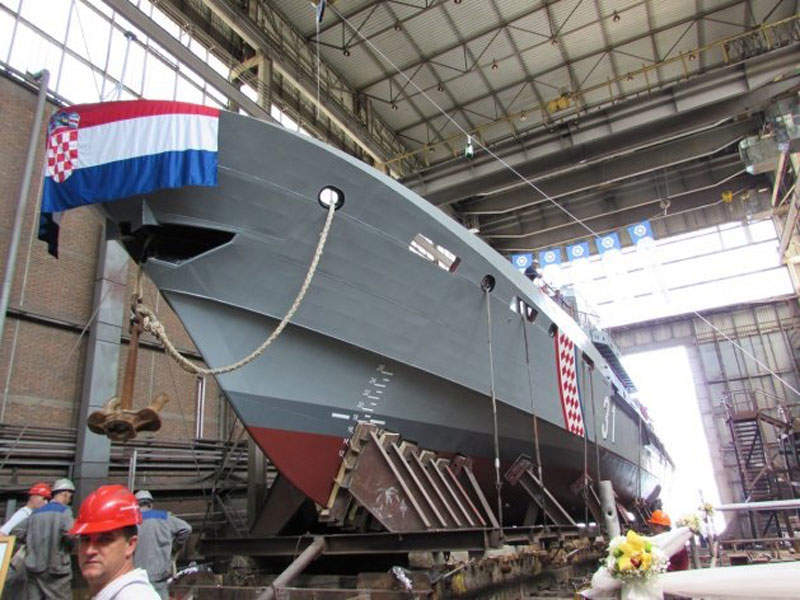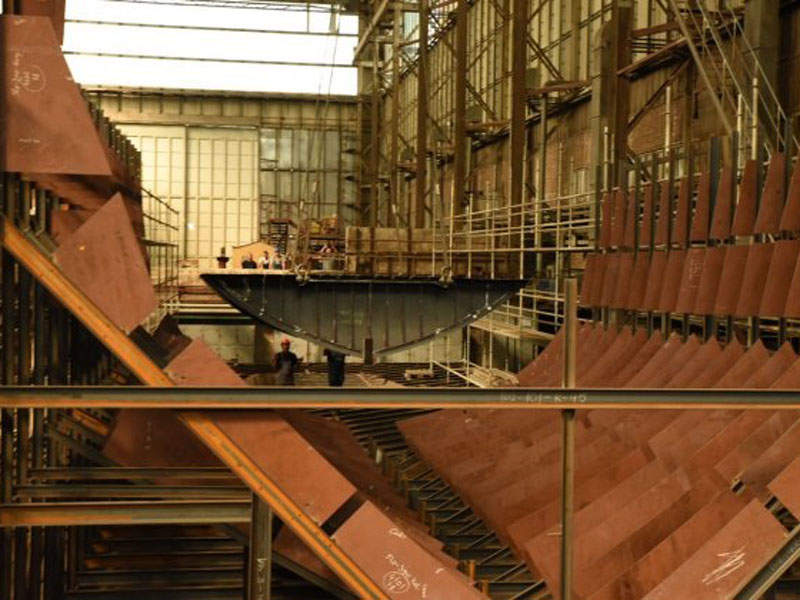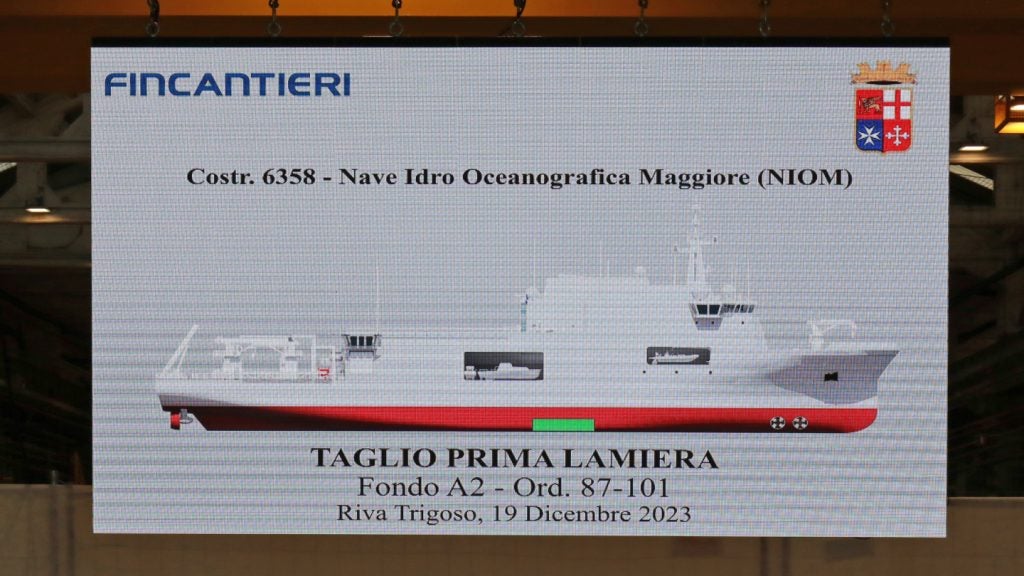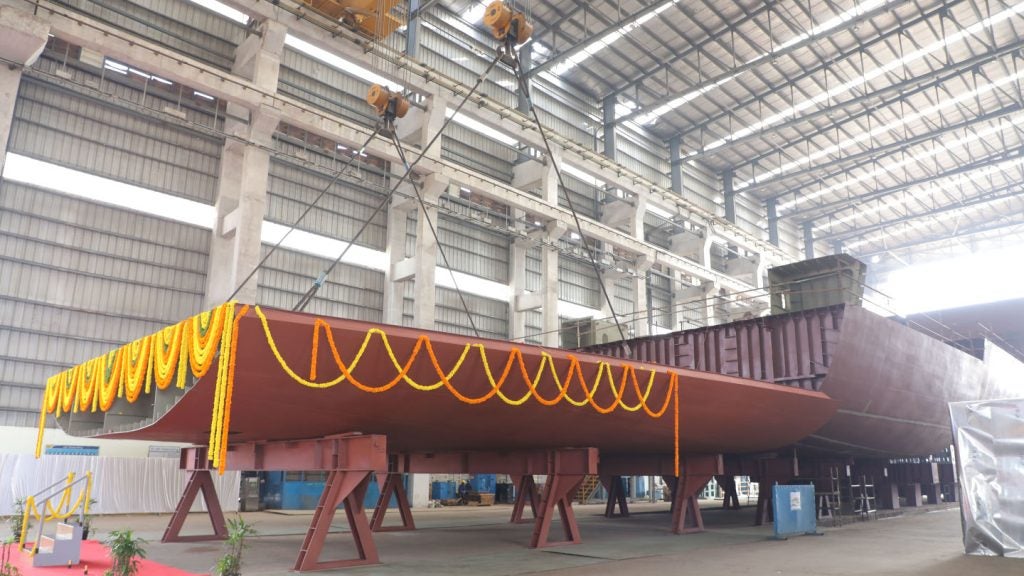The Ministry of Defence (MOD) of the Republic of Croatia acquired a series of five inshore patrol vessels from Brodosplit shipyard in order to increase the maritime protection capabilities of the Croatian Navy and Croatian Coast Guard.
The vessels’ primary mission is to conduct patrols in Croatian territorial waters in both the Adriatic and Mediterranean seas. The ships can also be used to perform other missions, such as search and rescue, monitoring and protection of internal waters, combat, special operations missions, and logistics support.
Deliveries of all vessels were scheduled to be completed by 2020.
Acquisition of inshore patrol vessels
A tender for the construction of five coastal patrol vessels was released in April 2013. The Croatian MOD received bids from a number of companies in March 2014.
In December 2014, Croatian shipyard Brodosplit secured a contract worth HRK385m (approximately $62.5m) from the Croatian MOD to build five inshore patrol vessels, including a prototype and four production vessels.
The keel for the prototype of the inshore patrol vessel was laid at Brodosplit shipyard, in the city of Split, in September 2015. The vessel was lowered into the water in June 2017 and was expected to be commissioned by the end of the same year.
The ship was scheduled to be delivered to the Croatian Navy in the third quarter of 2017, following the completion of in-port and navigation tests, which were to be performed by Brodosplit in collaboration with the MOD and Croatian Register of Shipping.
Upon receiving the prototype, the Croatian Navy would conduct a series of prototype tests in the Adriatic Sea to evaluate the ship’s navigation capabilities and technical specifications. The trials were expected to be completed by the end of 2017.
Design and features of the vessels
The Croatian Navy’s new coastal patrol vessels will be built in accordance with the Croatian Register of Shipping standards. The vessel features a conventional bow structure, which reduces wave resistance.
The overall and waterline lengths of the vessel are 43.5m and 39.11m, respectively, while the design and maximum draughts are 1.8m and 2.48m. The ship has a depth of 3.89m and maximum beam of 8m.
With a displacement of 220t, the patrol vessel can accommodate a crew of 14 members and three officers. Command and control functions are performed from the ship’s navigational bridge, located amidship.
The patrol ship will carry a rigid-hulled inflatable boat, which is manned by six crew members, to conduct transportation and patrol duties at sea.
Armament of Croatia’s new patrol vessels
The coastal patrol vessels will be armed with a 30mm automatic gun, remotely operated machine guns and air defence systems.
Mounted in the bow, the electrically operated 30mm naval gun can engage fast attack craft, patrol boats and surface targets in fully automatic mode. Equipped with EO/IR (electro-optical and infrared) sensors and a laser rangefinder, the weapon can operate in both day and night conditions.
A 12.7mm remotely operated machine gun will be fitted on the port and starboard sides of the navigation bridge to defeat small ships and light targets.
The vessel will be armed with up to four man-portable air defence systems (MANPAD) to firepower against enemy aircraft and helicopters flying at low altitudes.
Navigation aids
Croatia’s new coastal patrol vessels will incorporate a number of navigation and communications systems to provide enhanced performance and reliability.
The navigational aids include marine radar, searchlight, communication antennae and gyro-stabilised EO/IR turret. It will also have ultra-high frequency (UHF) satellite communications (SATCOM), surveillance radar and marine radios.
Located on top of the navigational bridge, the EO/IR sensor pod will offer increased situational awareness in all lighting conditions.
Propulsion and performance of the patrol vessels
Each of the five inshore patrol vessels will be powered by two Caterpillar 3516C marine propulsion engines rated at 2,525kW each. They will also be fitted with two propellers for high speeds and improved manoeuvrability.
The propulsion system provides a maximum speed of 28k. The vessel can reach a range of 1,000nmi when sailing at a speed of 15k. It will have the ability to stay at sea for up to 10 days.

